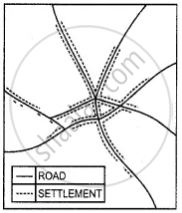Advertisements
Advertisements
Question
Explain urban area according to Government of India Census of 2011.
Solution
As per the 2011 Government of India Census, an urban area is characterized as a location having:
- A population of at least 5,000.
- At least 75% of working-age males were involved in non-agricultural activities.
- a minimum population density of 400 people per square kilometer.
Urban areas are divided into two categories by the Indian Census: Statutory Towns and Census Towns.
- Statutory Towns are places that the relevant state or union territory government has designated as urban areas under the law. These towns are typically larger urban centers with local government entities like corporations, municipalities, and municipal councils.
- Statistics on the other hand, towns are places that meet the requirements to be considered urban areas but do not yet have a formal status. Although these towns are not currently governed by local government agencies, as their population increases, they will probably eventually become statutory towns. It is significant to remember that different countries and regions may have different definitions of urban areas, and the Indian government's definition is unique to the demographic and economic circumstances of the nation.
APPEARS IN
RELATED QUESTIONS
Briefly explain the following terms :
(a) physiological density
(b) Conurbation
(i) Define the index of concentration.
(ii) How is it useful in the study of the population?
Figure A and B given below show two types of settlement patterns that have developed in India

Figure A

Figure B
(i) Name the settlement patterns in Figures A and B.
(ii) State one characteristic feature of each of the settlement patterns.
Answer the following question.
Define the density of the population. What is India’s density of population as per the 2011 census?
Answer the following question:
What is the index of the concentration of the population? Which state in India has the maximum index of concentration according to the 2011 census?
Answer the following question.
What is the difference between the arithmetic density of the population and the physiological density of the population?
According to the Government of India Census of 2011, the state with the highest density of population is ______.
